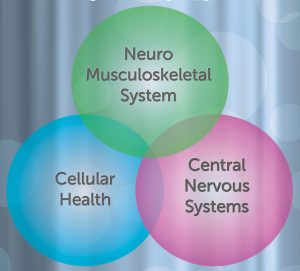Picking the right strategy. This component also has many sub-dimensions to it, but to keep things simple I will focus on just one. If you have a stubborn recurrent injury (e.g. you keep on sustaining a hamstring strain or knee pain) or you are struggling with a life affecting chronic issue (e.g. non-specific lower back pain), how do you know what is actually causing this? As a Clinical Remedial & Sports Massage Therapist I was always taught to “treat what I see and feel”. So I would talk to the client, observe posture and other external clues and then palpate the musculoskeletal system and determine a course of action for that treatment session. And, yes, quite often that would calm things down or even provide relief for the client, but often only for a period of time, after which the symptoms might return. My enquiring mind always wanted to understand WHY this was happening, especially as I was often confronted by a client who assumed that this was “normal” because they had been told by their GP or other health professional “they simply had to put up with it”. But I never accepted this premise and continued my journey to find deeper answers, in order to help them.
Understanding the Journey. In my Rubik’s Cube analogy I talk about accepting that you cannot always get to where you need to get to immediately; sometimes you have to pick a route that involves sorting out other issues first and then proceeding in a particular order to achieve the final objective. Another analogy that works well here is one of pulling a thread on a knitted jumper. Sometimes you pull a thread and it stops after a while, but on other occasions you pull a thread and a whole load of knitting unravels in front of your very eyes! It is this latter scenario that is the panacea of therapy. Finding the right thread to pull!
OK, let’s talk specifics. What ARE these multiple dimensions? How DO we know exactly what the underlying cause is for a particular problem? And how DO we pick the correct strategy to solving these often complex and life affecting issues for people?

On my Rubik’s Cube image above I show 3 key dimensions to resolving these issues; Neuro-musculoskeletal, Cellular Health and Central Nervous Systems. Together these dimensions come together under a science called “Intrinsic Biomechanics”.
There is actually a fourth dimension, but I will introduce this one at the end!
Intrinsic Biomechanics is all about what is happening and what we can measure INSIDE the body, that makes it work and move (or not work and move).
We isolate specific key factors (nerves, muscles, joints, structures, body metabolism and central nervous system operation) and see if these are each working optimally. Intrinsic Biomechanics is very different to Extrinsic Biomechanics, which is all about what we can see and measure from the OUTSIDE (e.g. posture or gait). Intrinsic Biomechanics drives Extrinsic Biomechanics and if we can better understand what is going on INSIDE, we have a far better chance of understanding what is happening OUTSIDE in terms of what we can see and feel and the specific symptoms the client is experiencing.
We now know for example that over 91% (and growing) of all musculoskeletal injury is directly caused by what is going on INSIDE the body. For example the vast majority of knee ligament or knee pain issues are actually caused by problems INSIDE the body that have been there for an extended period of time. In fact we now know specifically that the vast majority of these knee pain issues are directly caused through the pelvis not functioning correctly.
To be slightly more generic, we now understand that the vast majority of musculoskeletal injury occurs because of minute, concealed compensations taking place throughout the body, over a long time. There are no tangible symptoms to find through talking to the client, or through observation or palpation, but nonetheless they are there, like tiny little hammers knocking at various places throughout the body. Eventually however, when circumstances are “right” i.e. the place where the hammer is hitting becomes weak enough or is additionally provoked in some way, then injury and pain are the result, but not necessarily in the places where the hammers were hitting.


